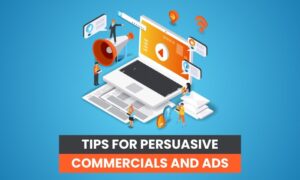There are thousands of conversion rate metrics you could track.
But which ones are really important? If your website isn’t hitting its goals, which ones should you pay attention to and work to improve?
The sheer number of metrics can be overwhelming, but in this piece, I’ll show you the eight most important conversion rate metrics. Measure and optimize for these, and you’ll start to see an uptick in how well your site does.
By the end of this article, you’ll know what to study, what to ignore, and how to improve your site’s conversion rates.
1. Traffic Sources
Surprised my first metric isn’t traffic?
Don’t be. Increasing traffic isn’t as important as a lot of people think when it comes to conversion rates metrics. What really matters isn’t how many people visit you, but how well those visitors help you achieve your goals.
And understanding where visitors are finding your site is key. There are three primary sources of traffic.
- Direct visitors: These are visitors that come to your site by directly typing your URL in their browser address bar.
- Search visitors: These site visitors find you through a search engine, usually Google.
- Referral visitors: These visitors click through a link to your site from somewhere else, whether that’s another website, a social media page, or somewhere else.
Different types of traffic have different engagement levels. Since engagement is the #1 challenge for B2B marketers, it’s a good idea to track each traffic source individually and see which are doing best.
It is important to have a diverse number of sources for incoming traffic. If you’re getting all your visitors from one source, it can be risky.
For example, if all your traffic is coming from search and Google’s algorithm changes, you could lose all your traffic overnight. It’s best to keep your traffic diversified to protect yourself.
2. New Visitor Conversion Rate
The way a first-time visitor interacts with your site is very different from how a returning visitor interacts.
To improve first-time visitors conversions, you have to isolate this metric from the conversion rate metrics of your loyal or returning customers. See what they’re interested in when they visit the website for the first time and how you can improve that experience.
You only have a few seconds to grab the attention of a visitor, so take a hard look at your first impression and compare it to your competitors. What message are you communicating?
Think about what matters to you when you visit a site for the first time. Chances are, you’re looking for factors like usability (how well you can navigate it), clarity (understanding what the site’s all about), and value (finding the information you were looking for).
How can you make the first impression of your site clear, useful, and valuable?
3. Return Visitor Conversion Rate
When you look at returning visitor conversion rate, there are two questions you should be asking yourself.
First, why did the person return? Second, did the person convert the first time around? And if not, how can you convert them the second time they visit your site?
Keep in mind, even if someone didn’t convert as a new visitor, you made enough of an impression to get them to come back. This means the conversion process on the return visit will be much easier than it might be the first time they found your site.
You’ll need to isolate the return visitor conversion rate and figure out how to increase that.
4. Interactions Per Visit
Even if a visitor doesn’t convert, all is not lost. You can still monitor their behavior on the site.
What exactly are they doing, how can you get them to do more of it, and how can you influence this behavior into conversions?
For example, if visitors are looking at a lot of different pages, spending a lot of time reading those pages, and leaving comments or reviews, they’re still interacting at a high level. Even if they’re not converting (yet) your goal should be to increase these interactions.
You can use a tool like Crazy Egg to help you understand where your visitors are clicking and how they’re interacting with your content.
You should also figure out how you can leverage those interactions into increased conversions, whether that’s downloads, subscriptions, purchases, or something else.
5. Value Per Visit
The value of each visit is a simple metric to understand, but much harder to calculate. Basically, it asks how much each visit is worth.
The simplest way to calculate this is by the number of visits divided by the total value created. Let’s use an eCommerce store as an example.
As you can see from recent data, most eCommerce site conversion rates hover around three to four percent, with mobile users reaching about half of that.
If this store gets a three percent conversion rate, and the average purchase is worth $100, that means they sell about $300 for every 100 visitors. In other words, their value per visit is $3.
Sometimes this metric is difficult to calculate because the value comes long after a visit, or comes in an intangible form that’s hard to measure.
For example, blog visitors might create value every time they add a page view to your traffic if you’re selling advertising. But they also create an intangible value when they comment on your site, making it look more authoritative and engaged.
Similarly, visitors on eCommerce sites create value every time they purchase a product, but they also create a somewhat incalculable value when they leave a product review or when they tell their friends about the site through word-of-mouth.
6. Cost Per Conversion
This is the corollary to value per visit, and it’s one of the most important metrics you can calculate. It’s also known as lead generation costs or cost per referral.
It doesn’t matter if you have high conversions and high value per visit. If your costs are prohibitive, your net income might be zero or even negative.
In the example of the eCommerce store with a $3 value per visit, that might be great if their traffic is free. But if it costs them $150 per conversion, and each conversion only places a $100 order, the store will go broke quickly.
While trying to increase conversion rates, keep your costs per conversion and overall margins in mind.
7. Bounce Rate
When you’re just starting, you’ll want to minimize your visitor bounce rate. The bounce rate is the rate at which new visitors visit your site and immediately click away without doing anything.
Since they’re not spending time or interacting, it’s a sign they’re not going to convert.
A high bounce rate can mean several things, including weak or irrelevant sources of traffic or landing pages that aren’t optimized for conversion. Common problems include poor design, low usability, or high load times.
Another problem might be the type of page people are landing on. For example, research shows product detail pages underperform other types of landing pages. If that’s a problem on your site, drive visitors to other pages instead.
If you’re in eCommerce, bounce rates are often called abandonment rates, that is, the rate at which people abandon their shopping carts without purchasing.
There are a lot more factors involved when there’s a purchase at stake, but it’s usually the result of a complicated checkout process or surprise costs or fees.
8. Exit Pages
Finally, you need to figure out which pages are causing people to leave. In many cases, your final call to action or conversion may be on page two or three of a process. For example, you might want people to browse products, add one to a cart, then enter payment information.
If people are leaving before getting to the final step, you’re losing out on potential customers.
To solve this problem, dive deeper into your exits and figure out at what stage in the process your visitors are leaving or abandoning their cart.
There are of course lots of reasons, but by optimizing for your exit pages, you’ll start to see your conversion rate metrics increase.
Conclusion
Whether you’re looking to sell more products, get more customers, or drive more visitors to your offline store, conversion rates metricsare the key to success. To really succeed, you need to focus on the right numbers.
Look for your traffic sources and the conversion rates from those different sources. You’ll also want to look at how engaged your traffic is. Are they interacting with your content? Are they finding value, either tangible or intangible, when they visit?
Are they sticking around and browsing onto different pages—or bouncing as soon as they arrive? If they’re leaving, which pages are causing them to leave?
Understanding how your audience responds to your site is key to improving conversion rates.
Which conversion rate metric will you track and improve first?


